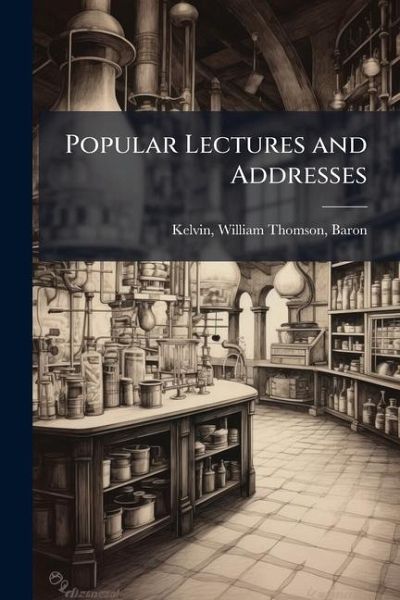
Popular Lectures and Addresses

PAYBACK Punkte
13 °P sammeln!
"Popular Lectures and Addresses" presents a collection of insightful essays and speeches by the eminent physicist William Thomson, Baron Kelvin. Spanning a range of scientific topics, these works offer a fascinating glimpse into the scientific thought of the late 19th century. Kelvin's ability to communicate complex ideas in an accessible manner makes this compilation valuable for both science enthusiasts and scholars. The lectures cover diverse subjects within physics, reflecting Kelvin's wide-ranging interests and significant contributions to thermodynamics, electromagnetism, and other field...
"Popular Lectures and Addresses" presents a collection of insightful essays and speeches by the eminent physicist William Thomson, Baron Kelvin. Spanning a range of scientific topics, these works offer a fascinating glimpse into the scientific thought of the late 19th century. Kelvin's ability to communicate complex ideas in an accessible manner makes this compilation valuable for both science enthusiasts and scholars. The lectures cover diverse subjects within physics, reflecting Kelvin's wide-ranging interests and significant contributions to thermodynamics, electromagnetism, and other fields. His addresses provide historical context and perspective on the scientific advancements of his time. This collection showcases Kelvin's dedication to disseminating scientific knowledge and his lasting impact on the scientific community. This work has been selected by scholars as being culturally important, and is part of the knowledge base of civilization as we know it. This work was reproduced from the original artifact, and remains as true to the original work as possible. Therefore, you will see the original copyright references, library stamps (as most of these works have been housed in our most important libraries around the world), and other notations in the work. This work is in the public domain in the United States of America, and possibly other nations. Within the United States, you may freely copy and distribute this work, as no entity (individual or corporate) has a copyright on the body of the work. As a reproduction of a historical artifact, this work may contain missing or blurred pages, poor pictures, errant marks, etc. Scholars believe, and we concur, that this work is important enough to be preserved, reproduced, and made generally available to the public. We appreciate your support of the preservation process, and thank you for being an important part of keeping this knowledge alive and relevant.


